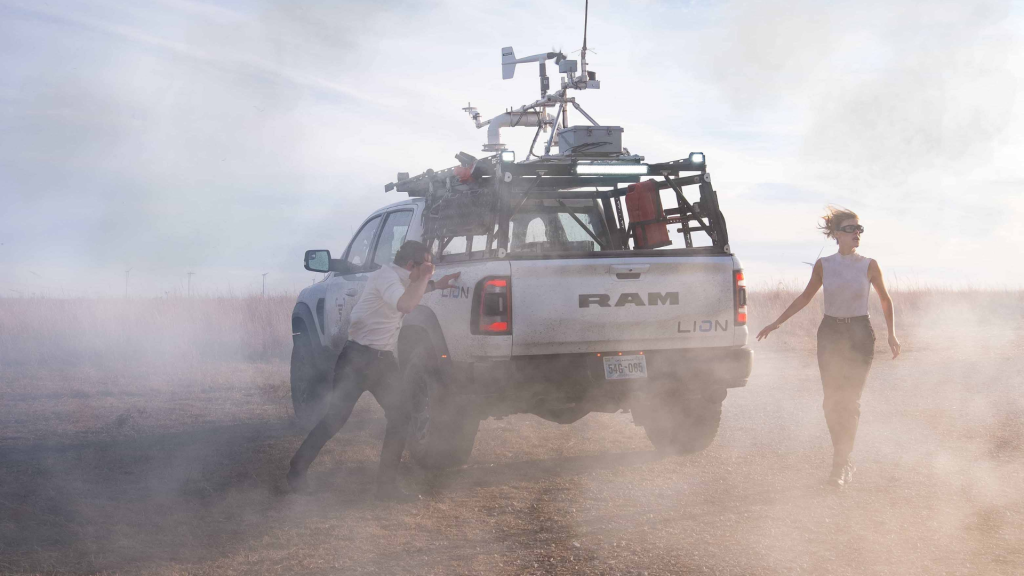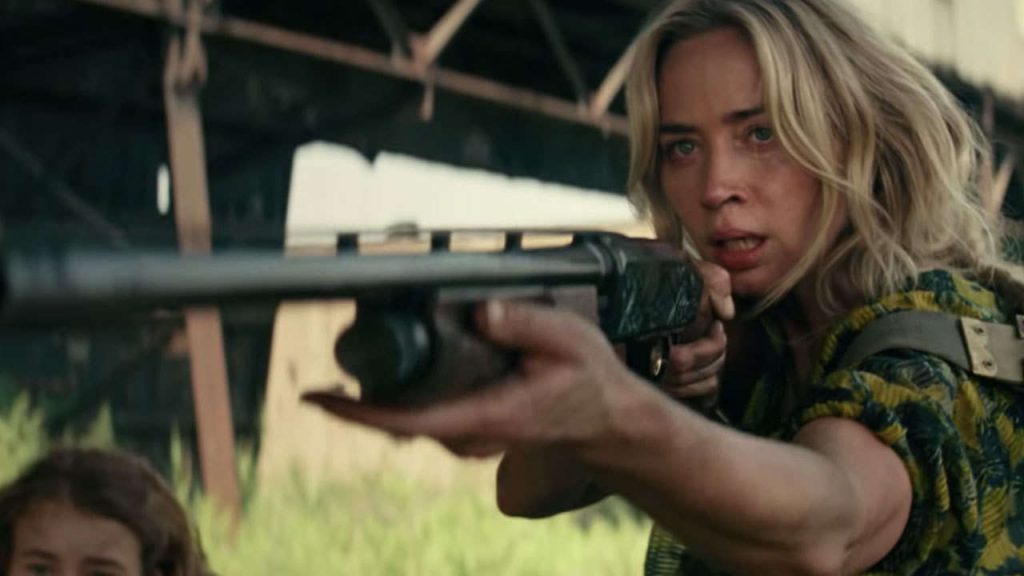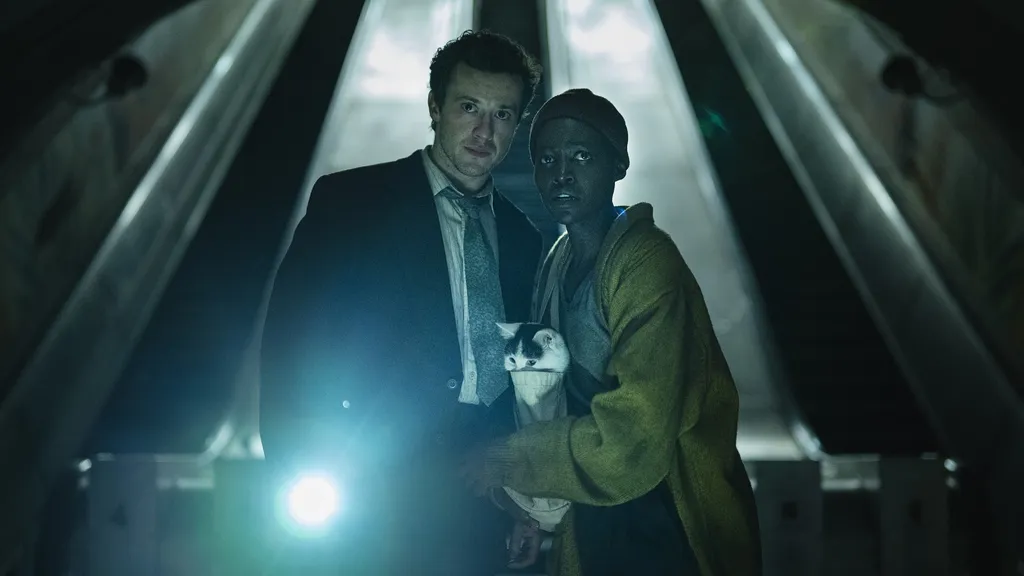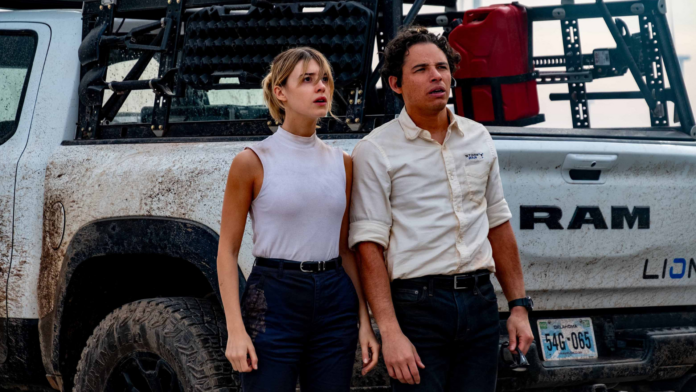Two of summer’s biggest blockbusters, A Quiet Place: Day One and Twisters, may seem like relatively innocuous escapist entertainment. Both, however, reveal a darker story about our current state of crisis.
Disaster films are becoming increasingly prevalent on our screens as we careen closer to the irreversible damages of global warming. Some would say we are already in the throes of it; In 2022, UN secretary Antonio Guterres made the sobering statement that, with regards to climate change, we had already “passed the point of no return.”
Whilst neither Day One nor Twisters directly engage with our current culture of crisis—the threat in the former being an alien invasion and climate change hardly being a central point in the latter—both films speak to an increasing anxiety around the end of the world.
I am always intrigued by how the Armageddon genre seems to be the exclusive wheelhouse of Hollywood cinema. One only has to think about some of the biggest Hollywood blockbusters: X-Men Apocalypse (2016), 2012 (2009), The Day After Tomorrow (2004), literally the movie Armageddon (1998). Hollywood in the last two decades has become obsessed with the end of the world. It’s hard not to see this eschatological fantasy as deeply rooted in the same American puritanism that brings us the bizarre phenomenon of doomsday preppers. This puritanical mindset, that one is responsible for their own salvation, produces a cult of the individual that is deeply suspicious of big government and state intervention. As a result, the culture seems to be looking forward to proving themselves, as opposed to trying to limit the effects of such a collapse.

Take Twisters. Although not ostensibly an apocalyptic movie, the awareness that the tornados in the film are getting more prevalent acts as a dog-whistle to the growing destruction caused by climate change. What one can’t help but wonder is: where the hell is the government in all this turmoil? Between a small band of academic storm chasers and a profiteering tech company, there doesn’t appear to be any state intervention in this behemoth of destruction. Nowhere is this more evident than, when moving townspeople into a movie theatre to take cover from an ensuing goliath of a tornado, Glen Powell is informed that the building wasn’t built with a basement bunker. WHY NOT?! Why is a public building in ‘twister central’ somehow not prepared for a tornado? Why was there no state legislation or public funding put into preparing for this inevitable disaster? This political ambiguity culminates in the most Hollywood message possible, that you don’t need to be afraid of social collapse and the end of civilization because we have (drum roll…) Glen Powell. Or rather, what he comes to represent: the good American hero. The Hollywood movie produces a myth of the hero for the next generation to aspire to, the same generation which is set to see structural and societal collapse.
Twisters’ disaster hero paradigm acts as a kind of opioid, easing and supplanting our anxieties around the climate crisis. It seems to respond to the cultural fears present in A Quiet Place: Day One and its predecessor. The A Quiet Place franchise is fundamentally a concern about whether the individual and its closest communal structure, the nuclear family, can survive the end of the world. Most apocalypse films have to deal with the question of health and illness at some point in their narratives. In A Quiet Place, however, this isn’t a side thought, but a central concern. The films’ preoccupation with health and disability—pregnancy, deafness, terminal cancer—in a world without public infrastructure reveals an anxiety around the precarity of our current healthcare system, already out of reach for many due to rising costs and lack of funding.
The conservative hero myth present in Twisters is slightly more ambiguous and subtle in A Quiet Place. In the first movie, the death of the father is emotionally distressing enough to suggest that perhaps the “we can make it on our own” mentality isn’t enough. Wider, public structures of care are necessary, and not just at the end of the world. That being said, the franchise is not beyond the evangelical propaganda of Hollywood. The hero myth is immediately picked back up, as seen symbolically in Emily Blunt picking up her husband’s shotgun. The hero narrative is resumed, only this time, it comes in a kick-ass girl version. The original conservative value is given a new liberal face.

This takes a bleaker form in Day One, where the ‘start of the end of the world’ is seen through the eyes of an end-of-life patient played by Lupita Nyong’o. In the beginning of the movie, the palliative care ward where Nyong’o lives is presented as drab, grey and depressing: a stark depiction of our current care system as austere and uninspired. As the film continues, we follow Nyong’o and her new friend, played by Joseph Quinn, around a desolate and dangerous New York, where finally Nyong’o must sacrifice herself in order for the young and healthy Quinn to survive. In doing so, the narrative highlights how our current culture privileges the healthy over the sick. Moreover, in a time where we are increasingly asked to take individual responsibility for our health to avoid pressure on public services, the healthy are rewarded and the ill are condemned.
The end of the film shows Nyong’o walking down the empty streets of New York, listening to Nina Simone’s iconic ‘Feeling Good’ through headphones in a boombox. The whole mise-en-scene, from camera action to lighting, movement and soundtrack, creates what at first seems to be a powerful act of resistance against the alien enemies as she rips out the headphones and makes herself a target to their monstrous echolocation.
But the monsters aren’t the real enemies here. In its presentation, this final scene is emotional and powerful, but at its core it is shockingly dark. What could have become a sobering message to the state of palliative care in the western world becomes a seductive and fundamentally fascist call to self-sacrifice: Ask not what your country can do for you, but ‘how can I die for my country?’
This abandonment of the ill can be seen as a form of necropolitics: the organisation and management of death. In the Western world, this often manifests through inaction and dismissal. This is clearly visible in how governments and public bodies were resigned to letting people die in response to AIDS and Covid-19. In the latter, necropolitics rendered many, particularly the elderly, “not worthy” of care. As the recent Covid inquiry in the UK has shown, it’s not unreasonable for a film like Day One to be concerned with government ineptitude in the face of a global health crisis—a health crisis which will become more common as ecological destruction increases.

The concept of Day One, made a little too obvious by Simone’s “It’s a new dawn, it’s a new day” ringing over the top, suggests that there is no hope for communal, political struggle to stop this age of crisis; we can only aspire to survival in its wake. A survival that can only be achieved without dead weight. Poor public funding and healthcare infrastructure fulfils its own necropolitical prophecy, killing those it’s unwilling to help.
What we see is that Hollywood reflects our social and cultural anxieties regarding the state of crisis we are in. Furthermore, it continues to produce an unhelpful paradigm to deal with it, one that places the individual center stage and refutes any radical political work. What is needed now is a cinema that actively engages viewers in ways that communal, public work can be effective in counteracting ensuing disaster and collapse. If not, we risk walking headfirst into the very horrors these films present as escapist-fantasy.
Words by Kit Gullis
Support The Indiependent
We’re trying to raise £200 a month to help cover our operational costs. This includes our ‘Writer of the Month’ awards, where we recognise the amazing work produced by our contributor team. If you’ve enjoyed reading our site, we’d appreciate it if you could donate to The Indiependent. Whether you can give £1 or £10, you’d be making a huge difference to our small team.
